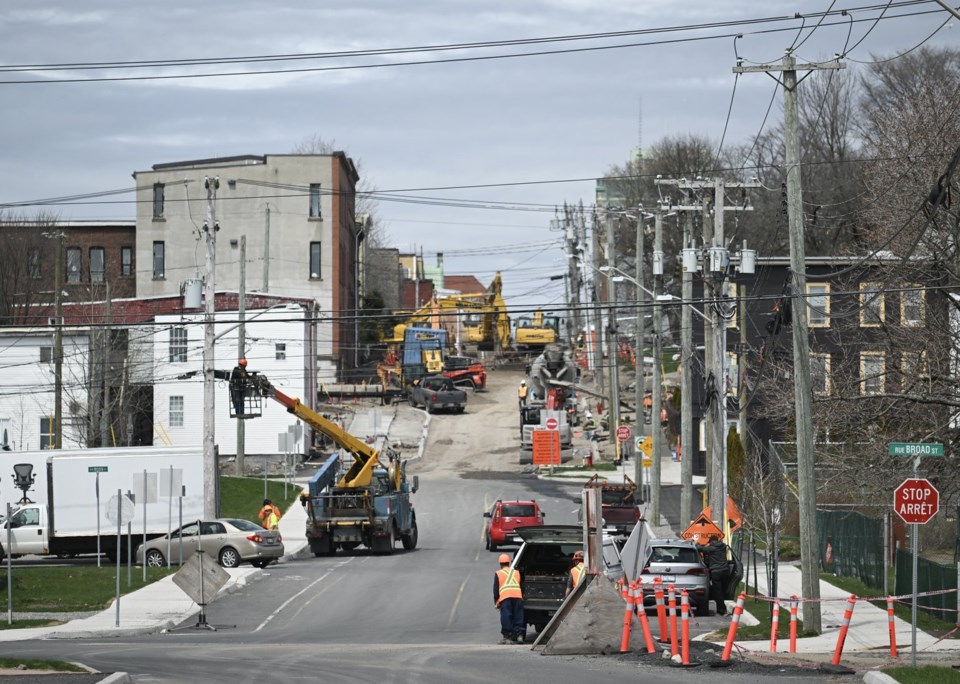TORONTO ÔÇö A new survey says most Canadian construction companies are still coping with a shortage of skilled labour, however their productivity and efficiency has improved in recent years as a result of investments in technology.
KPMG in Canada's third biennial survey on digital maturity and tech adoption in the construction industry found a shift is underway. Nearly eight in 10 respondents indicated that procurement processes are changing to encourage innovation and digital adoption.
The survey of 265 construction companies across Canada, conducted from March 18 to April 4 in collaboration with the Canadian Construction Association, also highlighted the need for tech investment to continue ramping up throughout the industry amid a growing labour shortage.
In recent years, experts have been sounding the alarm as the construction industry faces the dual challenges of replacing soon-to-retire workers while trying to grow the sector to address CanadaÔÇÖs rising need for homes.
The Canadian Home BuildersÔÇÖ Association has estimated 22 per cent of residential construction workers are set to retire over the next decade. It has also said Canada would need more than one million additional residential construction workers to meet the Canada Mortgage and Housing Corp.'s target of boosting home construction by 3.5 million units by 2030 in order to restore affordability.
Nearly three-quarters of construction leaders said they expect it will become ÔÇťincreasingly difficultÔÇŁ to meet demand over the next five to 10 years, particularly as retirements outpace recruitment, according to the survey released Wednesday.
"The industry is well aware of their labour conundrum," said Jordan Thomson, KPMG in Canada's national sector leader of building and construction, in a press release.
ÔÇťThe pressure is intensifying on the construction industry to do far more with less."
The survey said 78 per cent of companies are currently experiencing a shortage of skilled workers. While still "incredibly high," said Thomson, the figure is down from 90 per cent in 2023.
Seven-in-10 said the labour crunch is affecting their ability to bid on projects and meet project deadlines according to the report, compared with 86 per cent in 2023.
Those declines come as respondents indicate their companies are increasingly turning to digital technology to fill gaps. Around 81 per cent said labour productivity and efficiency have improved thanks to recent investments in technology, while 56 per cent are prioritizing technologies underpinning a demand-driven supply chain.
In addition, 53 per cent are prioritizing artificial intelligence and AI-driven software in their operations. Nine-in-10 said better tools, such as AI and analytics, can boost efficiency and labour effectiveness, up from 86 per cent in 2023.
Some of the technologies being adopted include drones for site surveys, robotic bricklaying and other forms of automation, along with advancements in modular or prefabrication construction ÔÇö when buildings are constructed in a controlled factory environment and then transported to the construction site for assembly.
Prime Minister Mark Carney has placed a large emphasis on scaling up prefabricated home construction as part of his housing plan, pledging $26 billion in financing to prefabricated home builders to reduce construction times by up to 50 per cent.
ÔÇťItÔÇÖs encouraging to see signs that procurement is beginning to evolve, but weÔÇÖre not there yet,ÔÇŁ said Canadian Construction Association president Rodrigue Gilbert in a press release.
"Too often, the system prioritizes lowest price over long-term value, which prohibits investment in innovation. If we want a modern, productive construction sector, governments must reform procurement to foster collaboration, ensure fair risk-sharing, and create the confidence companies need to invest and grow.ÔÇŁ
This report by The Canadian Press was first published June 18, 2025.
Sammy Hudes, The Canadian Press



